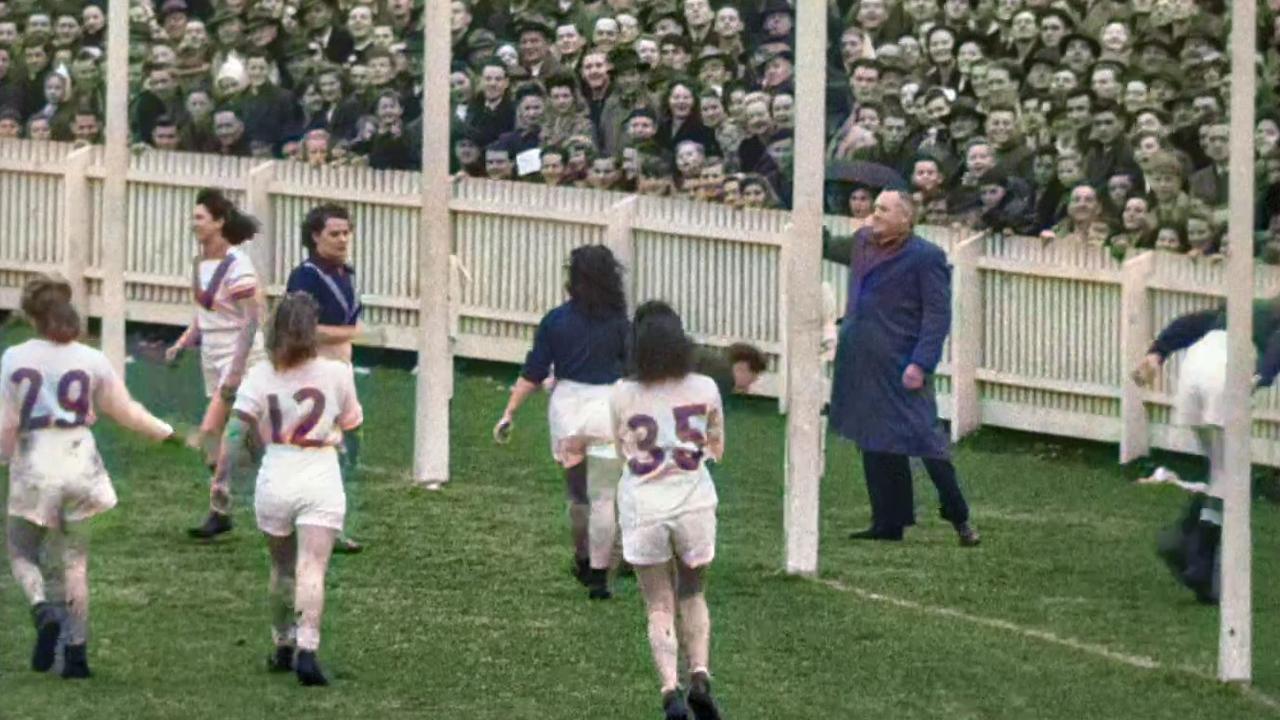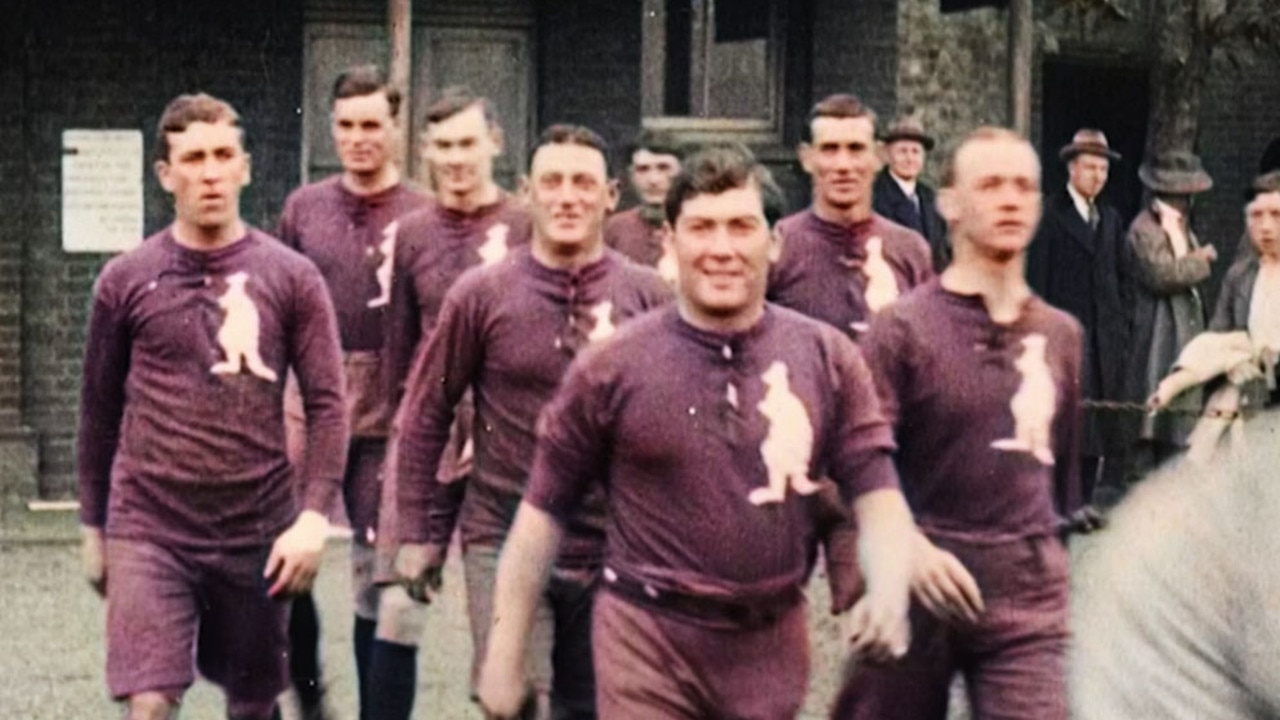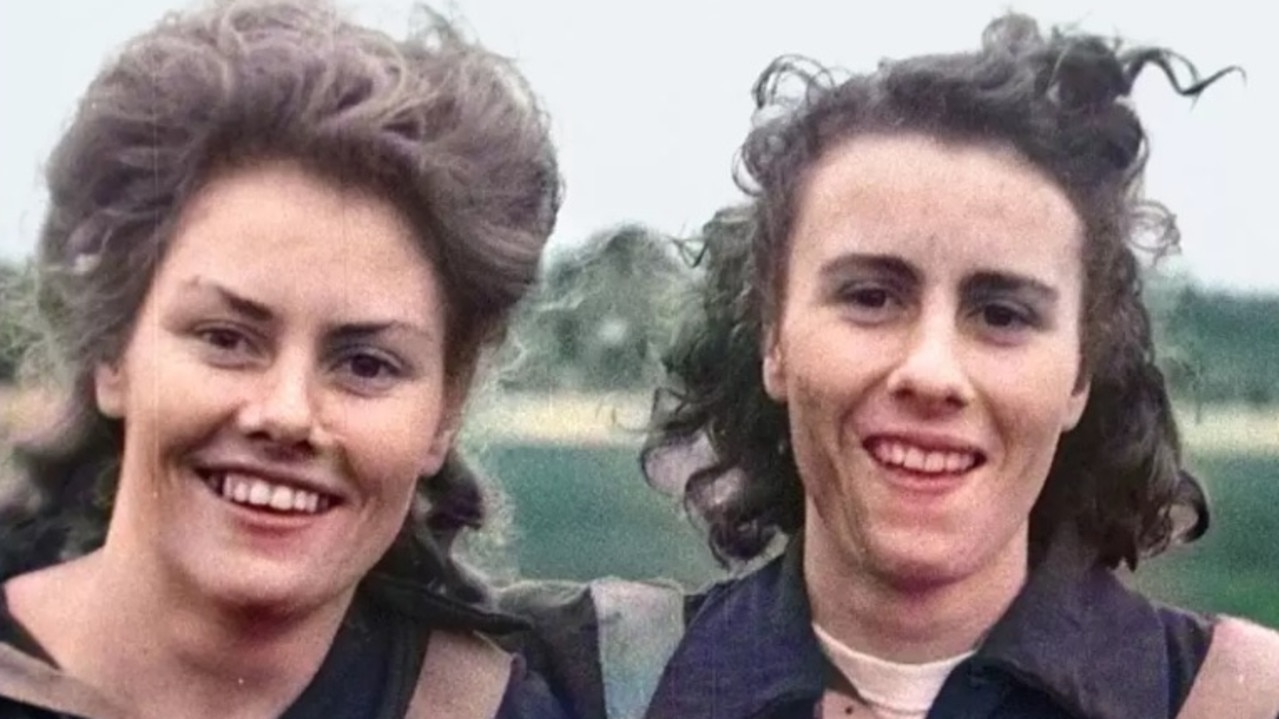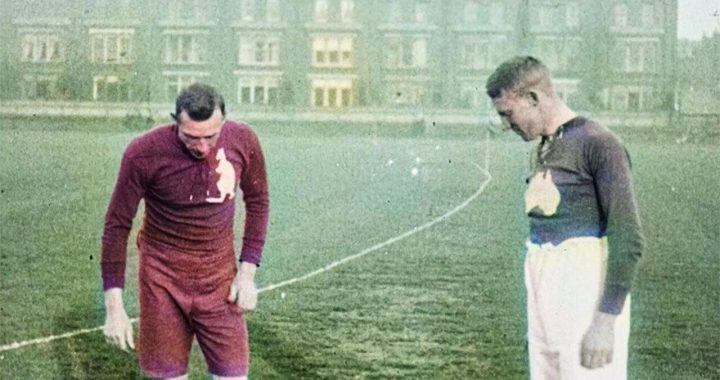Black and white 1916 footage of two Australian teams playing Aussie rules has been “colourised” using machine learning to give it a modern touch. A post World War II women’s tournament in 1947 similarly has been remastered.
The match took place on October 28, 1916, midway through World War I, and was between the army’s Third Division and Combined Training Units. Sadly, six players in the match would die in the war, including the Third Division captain, South Melbourne ruckman and defender Bruce Sloss, shown in the grey guernsey and white shorts at the coin toss.
The Third Division side included players from Collingwood, Richmond, Essendon, Melbourne and Geelong. The Training Units team depicted in red was captained by Norwood’s Charlie Perry, a chaplain, with players from East Fremantle, Fitzroy, South Melbourne and Essendon.
The match involved three months of planning and approvals including by the famed General John Monash. It is billed as the first-ever Australian rules match played overseas. Author Nick Richardson who narrates the footage says it was misfiled in the British Pathe Library as Australian Rugby.
Between 3000 and 8000 people attended the match. More details can be found here.

This is the second piece of footage recently “colourised” by the AFL. Two weeks ago it released remastered colour footage from a 1947 fundraising tournament between four women’s teams for the Food for Britain appeal after World War II.
The round robin tournament was the brainchild of the South Melbourne club which raised an equivalent today of about $50,000. South Melbourne, St Kilda, Carlton and Footscray took part. More details here.
The tournament was a one-off and shows the passion that the women had for playing the game, but it would be 70 years before the AFLW began, despite the enthusiasm then.
In both cases the colour segments were released amid narrated interviews because of the lack of footage, around 2 minutes, 30 seconds in each case. Because of the slow frame rates the films were edited to much less, particularly the men’s footage captured with a hand cranked camera at a slower rate, around 17 frames per second. The output was about 90 seconds.
It is understood that in both cases the AFL released every bit of film it had, and that the AFL might colour and release other old matches if a demand is shown for it.

It’s not rocket science to colour images and video. The colouring process originally was done by hand as long ago as 1840 in Japan and later in the west and was of course originally confined to prints.
But it didn’t take long for what was then a painstaking technique to be applied to film around the beginning of the 20th century and labs were created to do this, such as a lab operated by “colourist” Elisabeth Thuillier in Paris in the early 1900s. Colourists typically used crayons, oils and watercolours for this.
Digital colourisation began in the early 1970s and developed over the years as computers became more capable. The 13-part series World War II in HD Colour was produced a decade ago, while SBSs 4-part series Australia in Colour was telecast earlier this year.
However this particular colouring process involved machine learning and was undertaken by IBM.

These days algorithms can recognise areas of an image or frame such as grass and sky, objects such as faces and nearby buildings and “calculate” the colour based on previous exposure to thousands of colour images already ingested.
In this case the AFL provided IBM with hours of match footage from different decades: the 1970s, 80s, 90s, 00s, and 2010 onwards – around five terabytes (5,000 gigabytes) in all.
IBM used the vision as source material to calculate appropriate colours for the grass, the ball, the players and jumpers, although no one from the game is alive to verify its accuracy.
The remastered and colourising was done by the AFL in conjunction with Samsung which has a three-year sponsorship with the AFL.

There was also manual tweaking of the vision during the colourisation stage. The wine red colour of the Training Units jumpers came from a painting at the time.
Overall the process took months with IBM sending the AFL high quality still frame sequences. The AFL in turn used a “colourist” to grade the sequences and to repair blemishes where colour would bleed out from objects. The human touch was needed to fix and enhance images after the artificial intelligence did its job.
Nick Richardson wrote about the men’s match extensively in his book “The Game of Their Lives”.
Media courtesy of AFL Media. Published in The Australian newspaper
